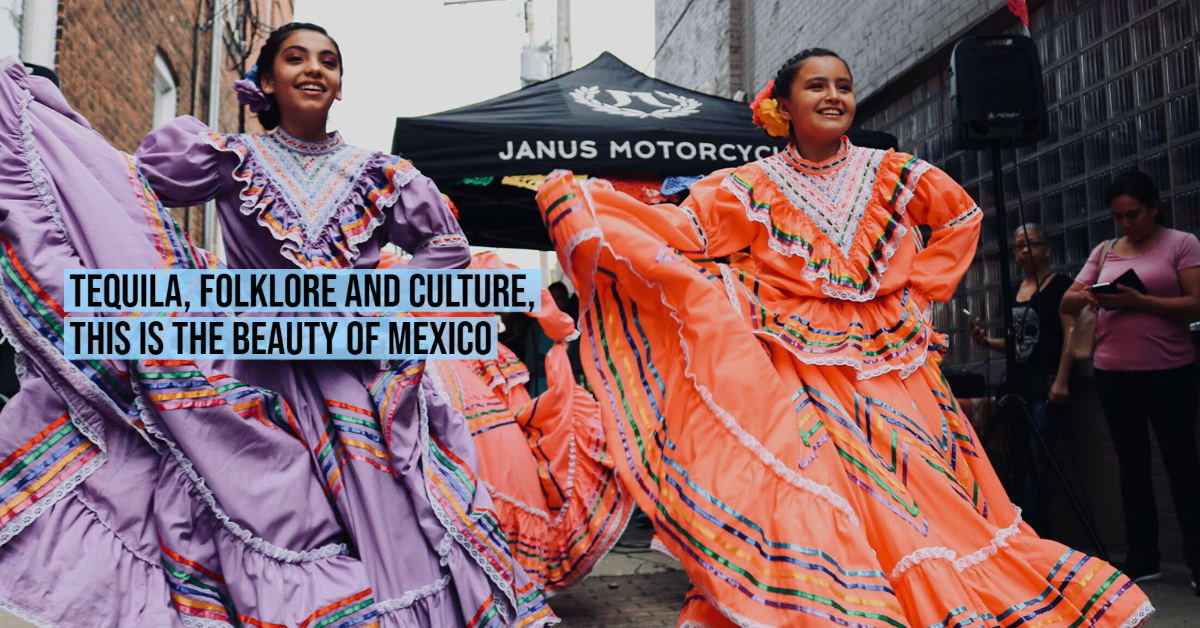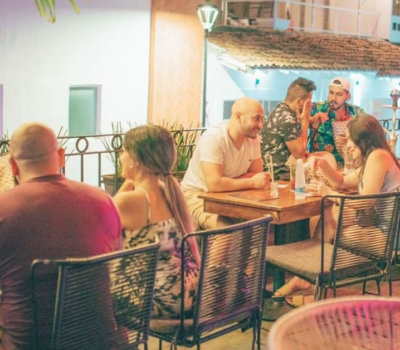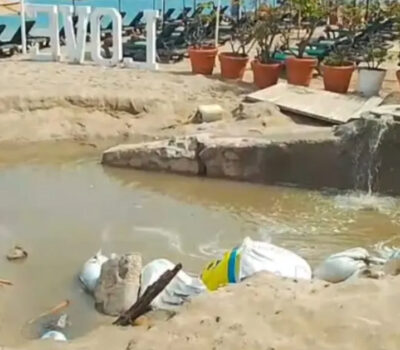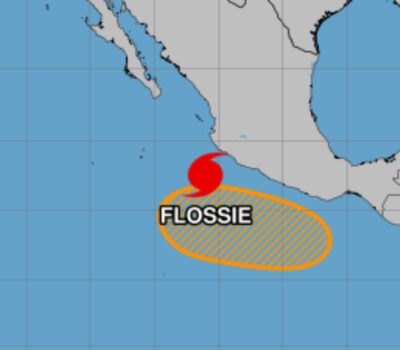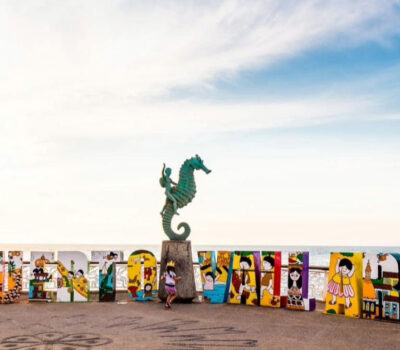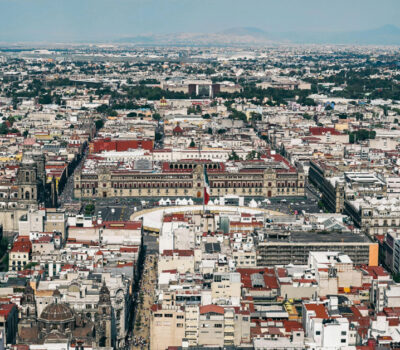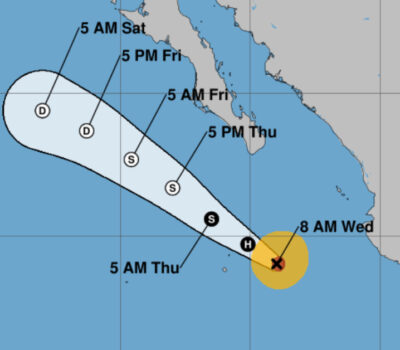Mexico is undoubtedly one of the most beloved countries around the world, the warmth of its people is unmatched, national and foreign tourists enjoy the hospitality, folklore, culture, and beauty that stretches through the different regions of our country.
Mexico is more than just 1,964,375 km2 of land, it houses places full of history, traditions, gastronomy; paradisiacal beaches, desert, and a lot of folklore from end to end.
Its diversity is so vast, full of colors, aromas, textures, music, and gastronomy; Some of the most known dishes are mole, tortas ahogadas, chiles en nogada, cochinita, and of course, the famous tacos. Each state, each region, and each town in Mexico has its own traditional dish and its own essence, where every location feels different from the other.
Another famous tradition in Mexico is the national drinks, tequila, which the city by the same name where the drink originates, was named a World Heritage Site on December 9, 1974; There is also mezcal, which was born as a traditional medicine in pre-Hispanic times due to its health benefits, related to the properties of the maguey and its microbiota (microorganisms) that benefit digestion.
North Region of Mexico
Todos Santos
In this region you can find, sea, oasis, desert, town, and mountain ranges in a single destination, a mixture difficult to find in any other place in the country. Among its attractions are the Mission of Nuestra Señora del Pilar, the main square, the General Manuel Márquez de León Theater, the Siglo XXI Cultural Center, and the art galleries that you will find on your way, with works by renowned international artists.
Once there, you cannot miss the opportunity to try the delicacies of traditional cuisine based on seafood. Three kilometers away you will find the beaches, ideal for the more adventurous surfers: visit the beaches Los Cerritos, Punta Lobos, La Poxa, and San Pedrito.
In addition, you can camp and do some fishing, a very popular activity in the area, and go whale watching (the season begins in early December).
Cabo San Lucas and San José del Cabo

In Cabo San Lucas you will find streets full of art galleries, sophisticated restaurants with menus whose main dish is giant shrimp dressed with tequila, lemon juice, butter, and garlic.
You can visit El Arco, one of the main attractions of Baja California Sur, to get there there are pangas that depart from the marina or El Médano beach for a 30-minute journey.
The Los Cabos area is known as the “Marlin Capital of the World”; In addition, it is one of the five best destinations in the world to practice sport fishing (seasons from May to June and from December to January).
Three secret tourist destinations in Sonora
If you are one of those who thought that in the north there were no worthwhile tourist places, you are very wrong, Puerto Peñasco, San Carlos, and El Pinacate are three of its tourist spots that have recently become popular, but have also brought new opportunities for some lesser-known attractions in the state.
Yécora
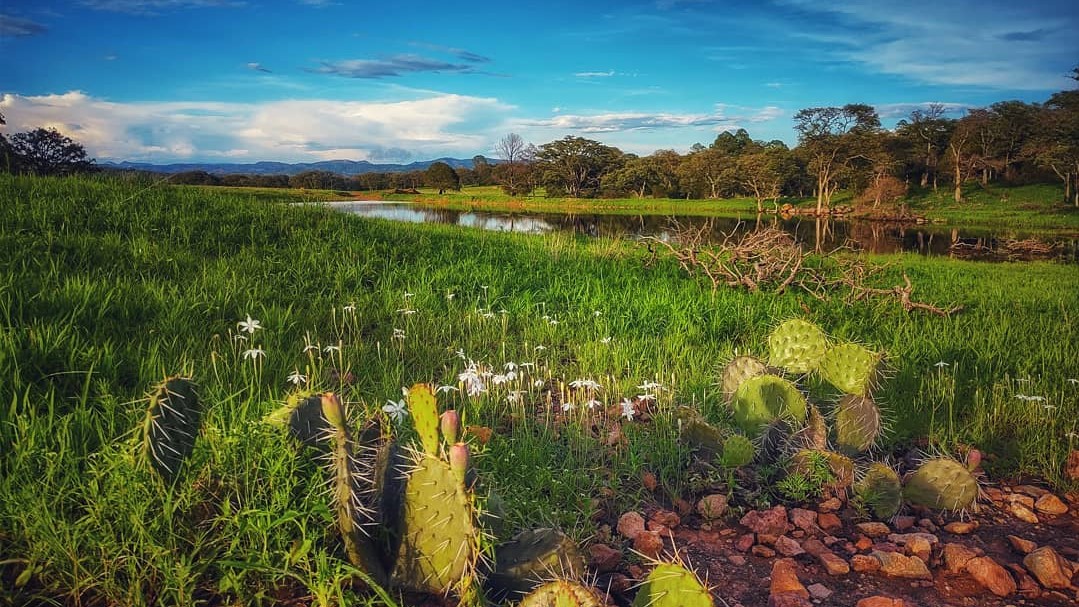
Its name, from the Pima language, means “place surrounded by mountains “, and it does it justice. The natural landscapes of Yécora are part of the Sierra Madre Occidental of Mexico, with steep cliffs and wooded vegetation of pines, oaks, and cypresses; It is a temperate forest that contrasts with the desert and hot image that exists of the state of Sonora.
In the coldest months, which occurs in the first months of the year, it is common to see snowfalls in this small town, giving Yécora “the air” of being much further from Hermosillo, but it is only 266 kilometers by car.
If views and nature are your thing, this municipality is a must-see option and relatively little known outside of the state.
Caborca Beaches
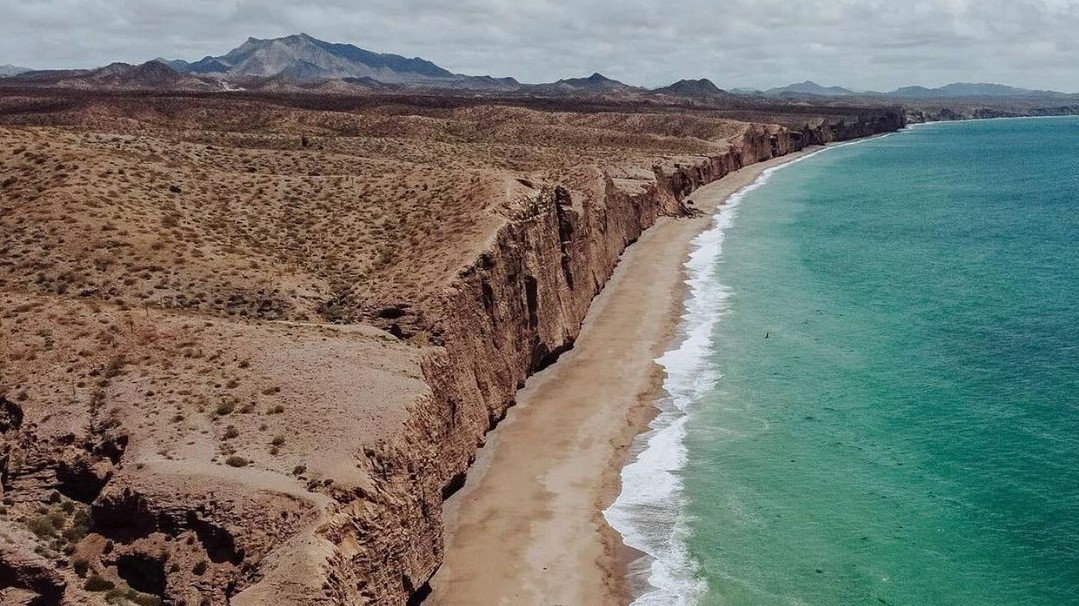
When thinking about Sonoran beaches, the most common are Bahía de Kino, Puerto Peñasco, and San Carlos, but with more than 1,200 kilometers of coastline, the state of Sonora has much more to offer and Caborca is a great example.
Three small coastal communities are among Caborca’s developing tourist destinations: Puerto Lobos, Puerto Libertad, and Desemboque. Of these, only the last one is traditionally considered touristy, and even so, it is not as frequented as other places despite having beaches that far exceed in tranquility.
The landscapes that are formed with the meeting of the desert with the sea are another of the great attractions of the area, as is the case of the Paredones de Puerto Lobos, rock formations that surround the beach and give it an unusual appearance. of a shade that on a good day can protect from the sun while you enjoy the view.
All these beaches are located a few hours by car from the capital city of Hermosillo, just over 94 kilometers east of the municipal seat of Caborca.
The Devil’s Cross
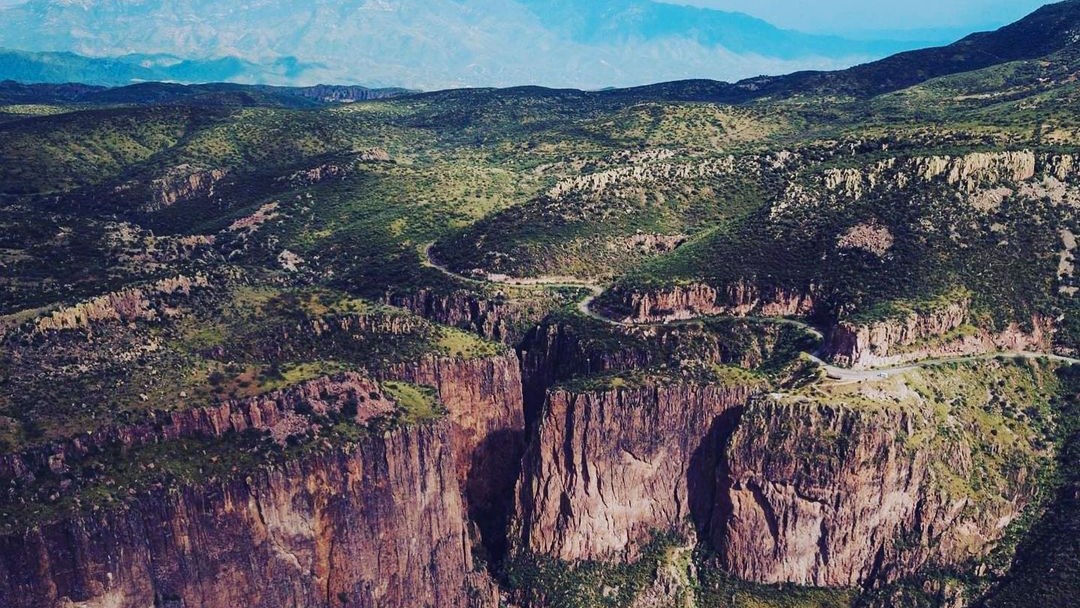
10 kilometers from the picturesque Huásabas, there is a place known as the Devil’s Cross, which is one of the best destinations for those who travel in search of adventure. It is a deep canyon that goes into the mountains, a steep terrain where you can practice activities such as hiking, climbing, and camping.
After a good day of walking, a stop at the tourist viewpoint provides an unparalleled view of the region, surrounded by nature and with a pleasant climate during the day thanks to the microclimate formed by the rock walls that protect the bottom of the canyon.
This has become one of the favorite destinations for those seeking more energetic tourism, with the nearby town of Huásabas providing a place to take a break, with a famously hospitable population rooted in the customs of the Sonoran mountains.
If you travel to Sonora, one of the must-sees is the saguaros forest, which will provide unforgettable desert scenery.
In this place, you will find the state’s huge forest of saguaros, a species of cactus with more than 100 years that lives in this area.
These huge cacti are over 20 meters high, so much so that they look like elephants or desert giants that once you are close they become a pile of thorns on a thick green bark, imposing.
The saguaros are wise old men who have seen hundreds of people pass through these places in their 200 and 300 years of life.
Jalisco
Jalisco is known as the land of mariachi and tequila, and its typical dishes are a delicacy for the palate, among which stand out: tortas ahogadas and carne en su jugo.
It has Magical Towns, but you can also enjoy the fresh air of Puerto Vallarta, the art of Guadalajara, and the devotion that is given to its saints and virgins.
The state offers one of the most beautiful landscapes in the world with its blue fields of agave. The destinations are unlimited, there are those to carry out activities in the mountains, beach, cities, and towns; not to mention what is obvious in Jalisco: the amazing gastronomy that is a benchmark today.
Jalisco is part of the Sierra Madre Oriental, Mesa del Centro and the Neovolcanic Axis. The name of the state originates from the Nahuatl word “Xalisco” which means “on the surface of sand.”
Tequila
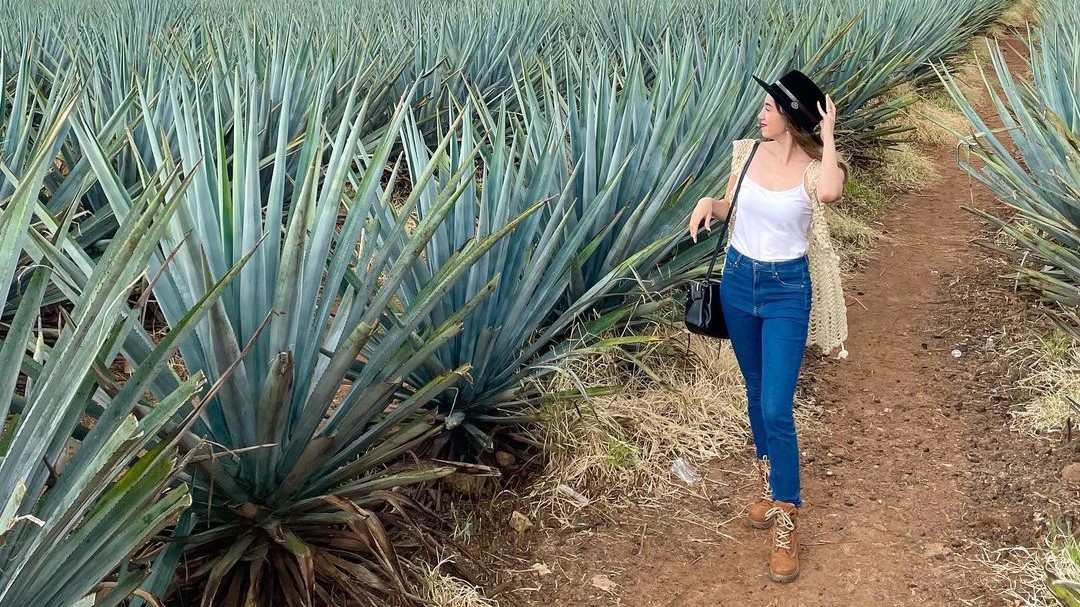
In this Magical Town, there are several places where you can enjoy a good drink to whet your appetite, be it tequila or mezcal. And for food, nothing better than a birria, Jalisco pozole, some spicy enchiladas, or seafood.
During the National Tequila Fair, between November and December, exquisite typical dishes of the region are enjoyed, as well as a great variety of tequilas.
Guadalajara
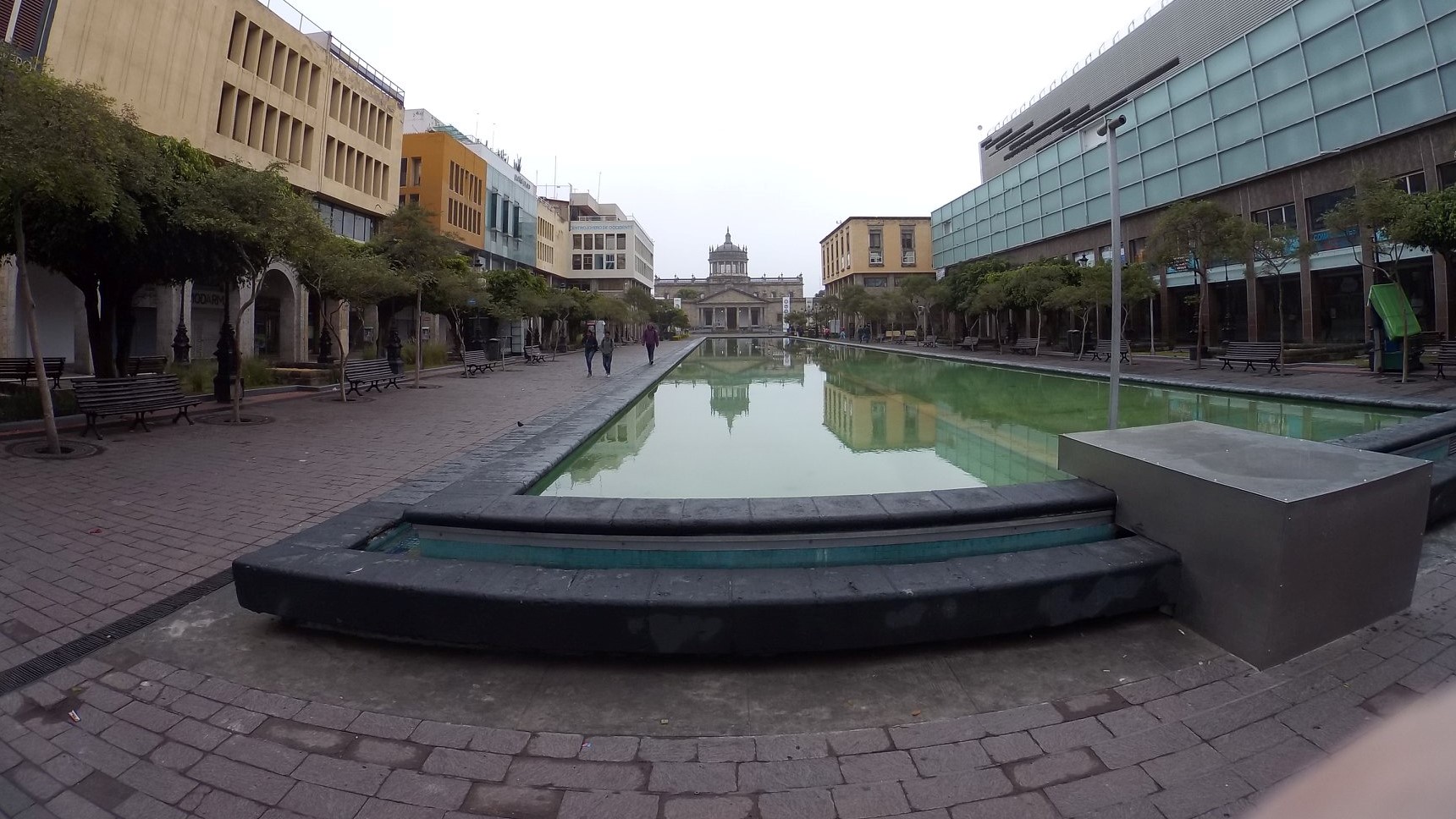
Before visiting Guadalajara, you can start your day with a good breakfast at La Chata, a restaurant founded in 1942 by Mrs. Carmen Castorena. It has become so famous that it already has several branches. As it is always full, we recommend making a reservation.
Then you can take a walk through the Historic Center of the city and eat at Karne Garibaldi, where they serve the best carne en su jugo. For dinner, there is the Fonda San Miguel Arcángel, where we suggest the stuffed quesadillitas and the shrimp with tequila.
Tlaquepaque
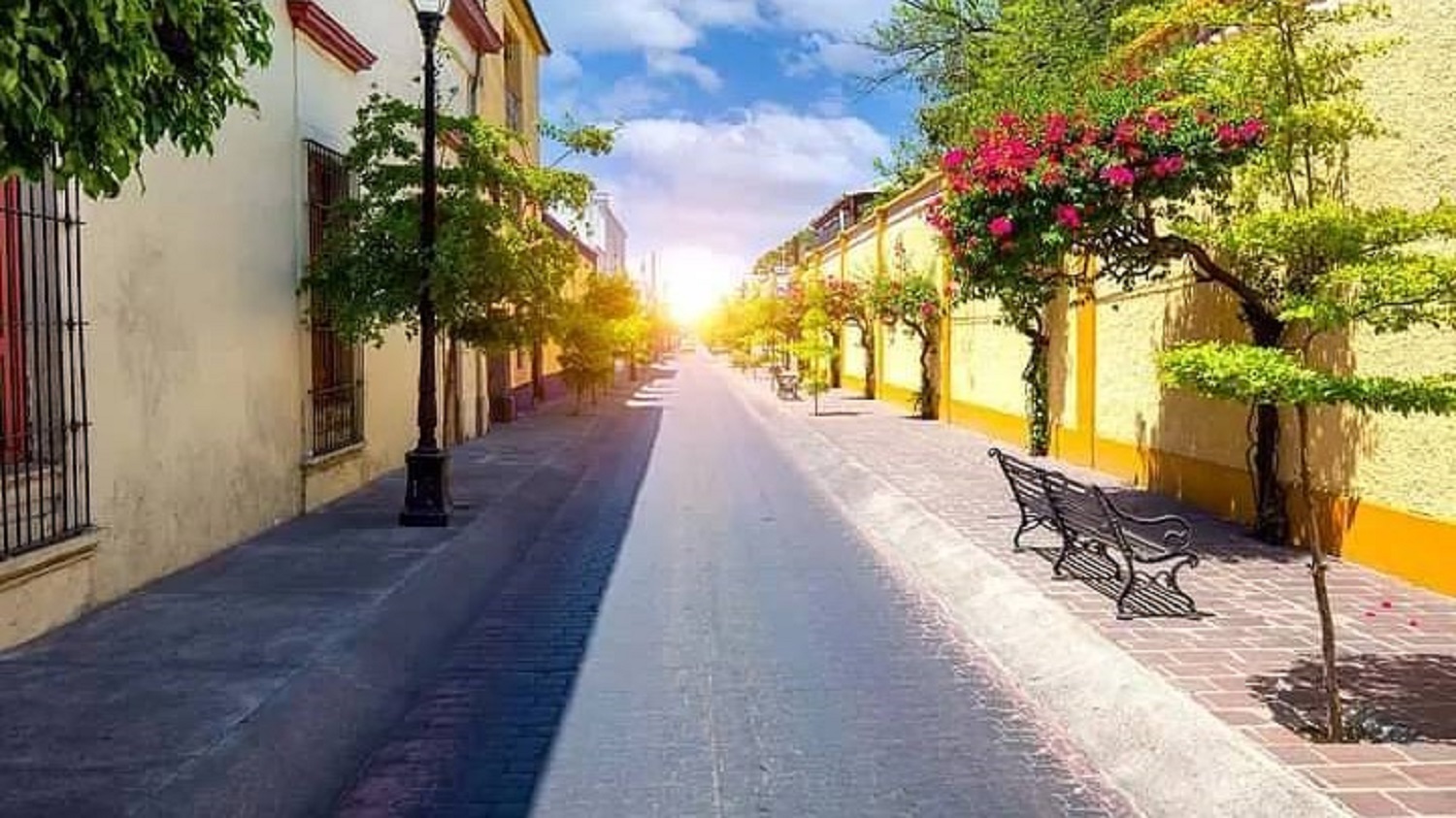
Tlaquepaque is known as the birthplace of countless popular artists and famous innovative potters of ancient techniques. To eat deliciously, a good option here is El Abajeño, where you can try a molcajete with panela cheese and hot green sauce, pork rinds, freshly made tortillas, and a fillet topping that is served with special enchiladas to make tacos.
Puerto Vallarta
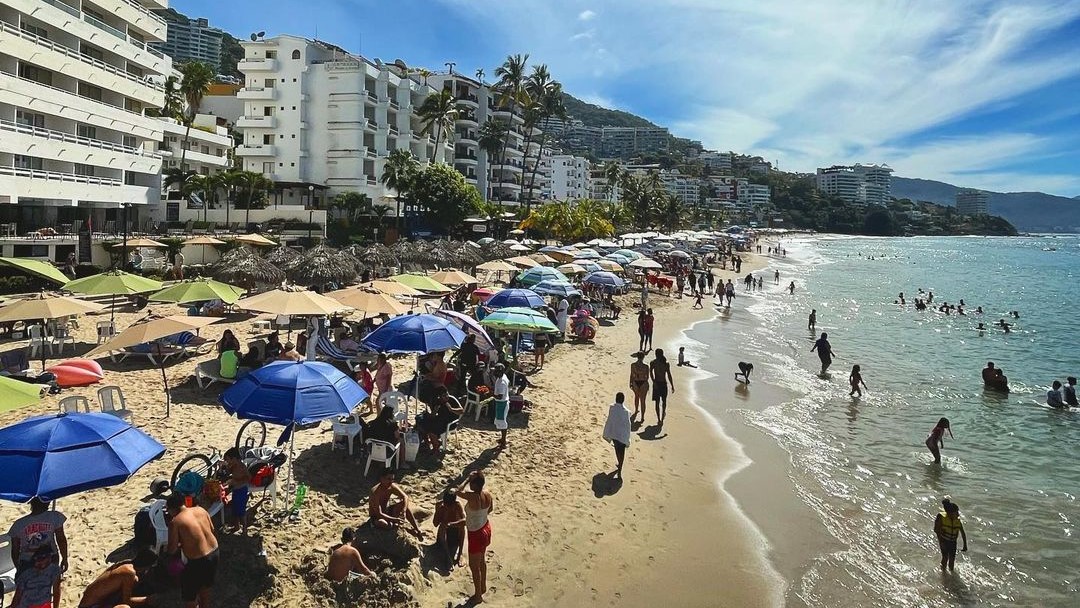
This magnificent beach destination is sheltered by the second-largest bay on the continent, the Bay of Banderas, known for its extraordinary natural beauties, its unexplored deep waters, and the abundance of its marine life.
On this Mexican beach, you can find comfortable hotels and grand tourism hotels that attract thousands of foreign visitors.
The picturesque old town of Puerto Vallarta has its own architectural style. Its cobblestone streets and adobe houses topped with red roofs highlight the elegance of the Mexican colonial style.
Famous for its sunsets, Puerto Vallarta is located in a fertile region rich in plants and marine life. The presence of species such as dolphins, turtles, and humpback whales adds to the rest of its natural attractions. In addition, adventure lovers will find numerous options for ecotourism activities such as diving and kayaking.
In recent years, Vallarta has become famous as an ideal place for art given the growing number of galleries and showrooms, as well as a gay-friendly destination.
Mexico City and Xochililco
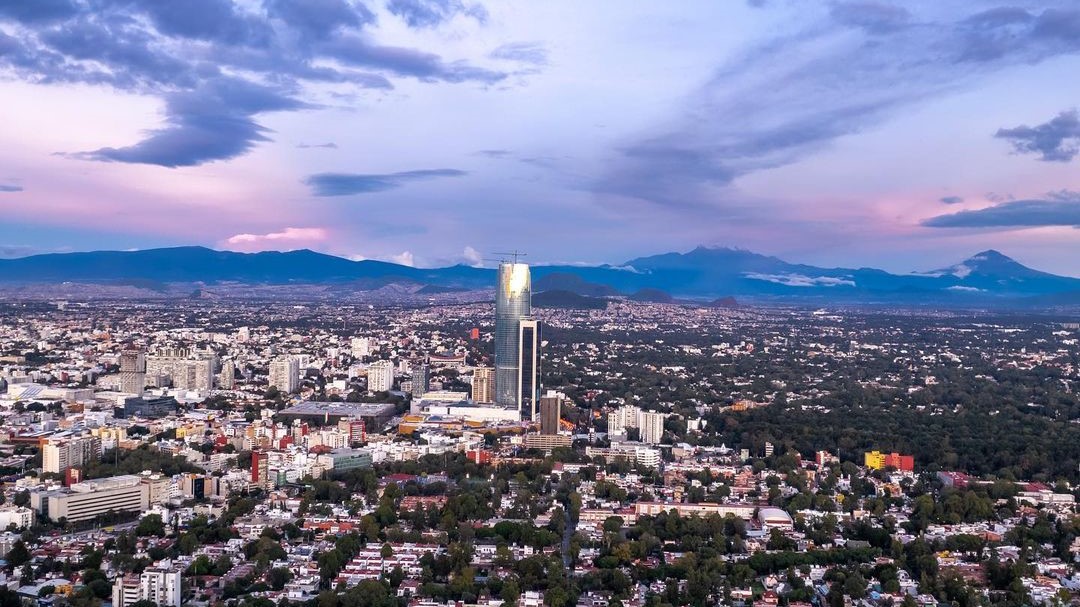
In the city, you will find endless activities that range from a tour of the main streets of the historic center, visits to the 162 museums it houses.
You can start your tour by the Alameda , a recently remodeled old park. On one side is one of the most beautiful buildings in the country: the Palace of Fine Arts. Some attractions that you can admire in this quadrant are the Postal Palace, designed by Adamo Boari; the Casa de los Azulejos with its Talavera façade and the Torre Latinoamericana viewpoint.
Continue towards the Madero pedestrian street, where you will find shops, restaurants, and venues such as the Palacio de Iturbide and the Museo del Estanquillo, founded by the writer Carlos Monsiváis.
At the end of the walkway, you can see the huge Zócalo and the original bell of the Grito de Dolores, located on the balcony of the Palacio de Nacional.
Then you can walk along the most important avenue in CDMX until you find the Bosque de Chapultepec, which hides riches such as the National Museum of Anthropology, the National Museum of History “Castillo de Chapultepec”, the former residence of Maximiliano de Habsburgo and Carlota. Other points of interest in the area include the Museum of Modern Art and the Tamayo Museum, which exhibits works by the Oaxacan muralist and international contemporary artists.
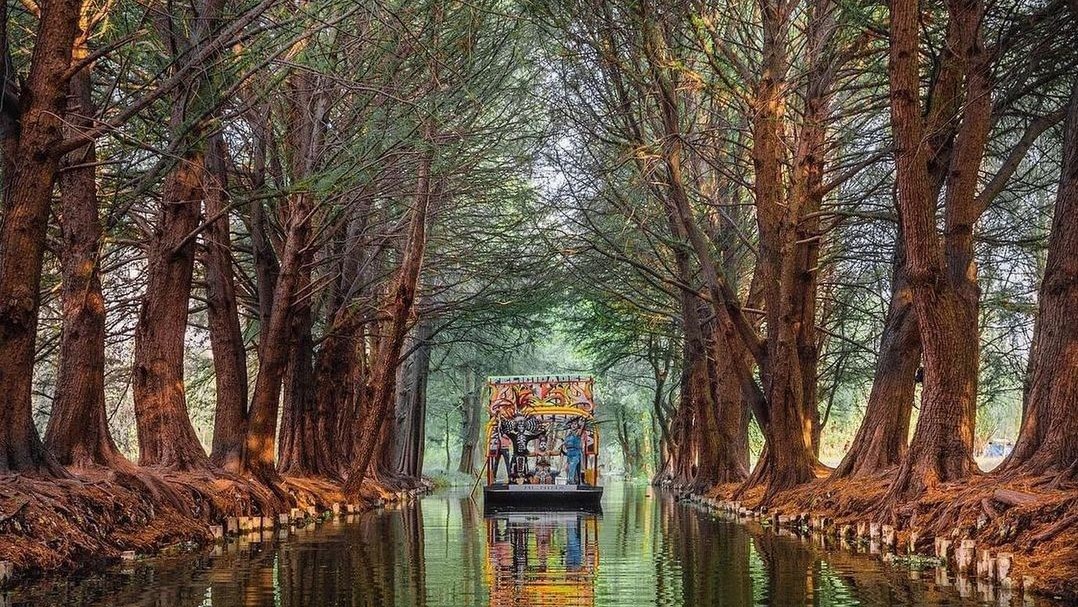
Another of the most emblematic places of Mexico City without a doubt is Xochimilco, this site protects the most important of Mexican history as well as having tourist attractions that seem out of this world.
A Xochimilco is also known as the Venice of Mexico, this by having an extensive network of channels that are used as a tourist route where you can address one of the trajineras who have made Xochimilco iconic. Therefore, you cannot leave without entering the Xochimilco Ecological Park.
Inside this park, there are boats that will take you to know the interior of the place. On this pleasant trip, you can appreciate a natural spectacle, as well as the flower markets that are typical of the region, for this reason, the trajineras are decorated with hundreds of them.
Oaxaca
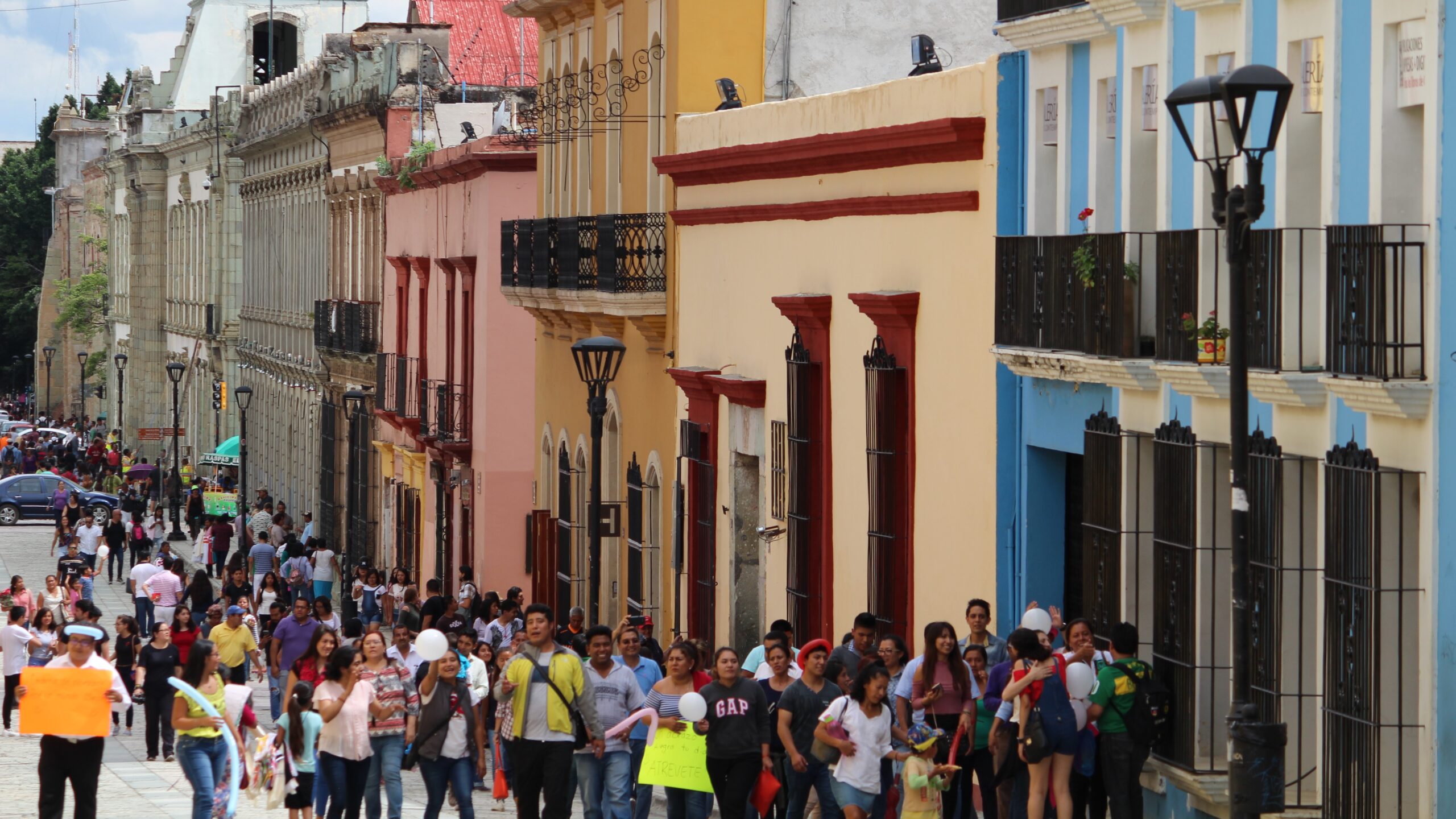
Perhaps Oaxaca is one of the Mexican destinations with the most folklore and culture in the entire territory of Mexico, which can give you moments of magic.
You will be able to find the finest artisan expressions, some of the deepest patron saint festivals in Mexico, exquisite gastronomy, and spirits that are not compared to any other.
Oaxaca comes from the Nahuatl word Huaxyacac which means “on the nose of the guajes”. Most of the state has a climate warm and humid average annual temperature is 22 ° C. The archaeological site of Monte Albán, the prehistoric Caves of Yagul and Mitla, and the Historic Center of Oaxaca are World Heritage Sites. It has the magical towns of Capulálpam, Huautla de Jiménez, San Pablo Villa de Mitla, San Pedro and San Pablo Teposcolula and Mazunte .
The mezcal is not only one of the most representative drinks Oaxaca, but also of Mexico, and more and more people are enjoying the agave drink.
Of course, there is no better place than Oaxaca to try traditional mezcals and learn more about this drink. If you plan to visit the capital and you are in a mezcalero mood, do not forget to take a tour of these places.
Terraza de Casa Crespo. One of the coolest places in Oaxaca, it is ideal to visit on Thursday or Friday with a couple of friends. The terrace offers a privileged view of downtown, especially the former convent of Santo Domingo, and the music – rock, jazz, electro, pop – invites you to have a few drinks without worrying about anything other than having a good time.
Sabina Sabe; Low lights, intimate atmosphere, flirty cocktails, without a doubt, this is a great option to spend some time as a couple (don’t rule out going with friends!). It has a restaurant area and, in the background, a very small bar: sit at the bar or at one of its tables and order a snack to accompany your drinks.
Chiapas
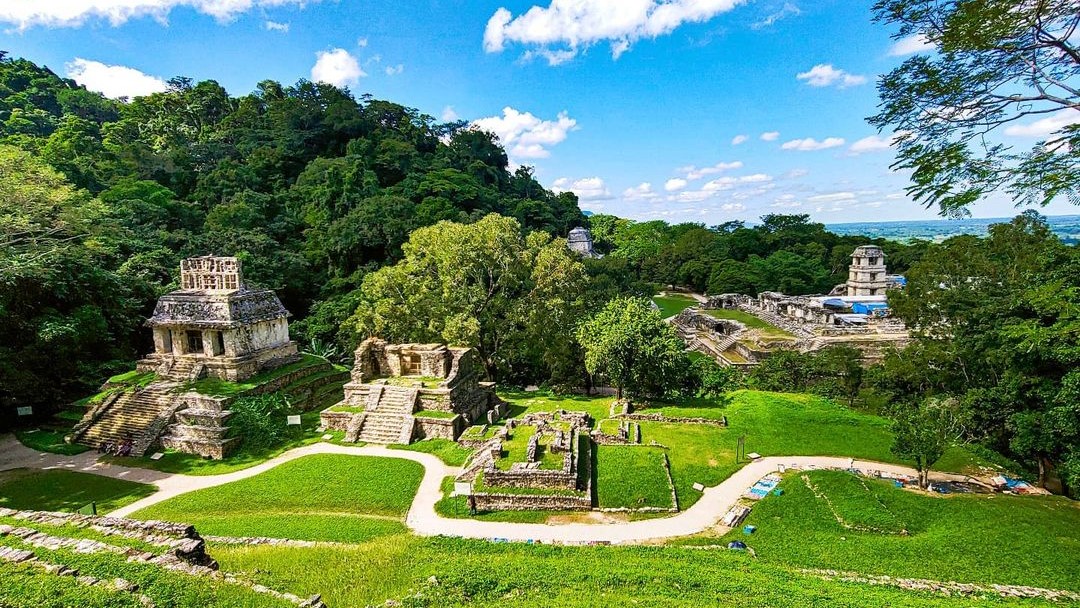
Chiapas is one of those states where the heart falls in love. Part of its charm is the living indigenous culture that has survived time. Chiapas treasures the most amazing Mayan ruins in Mexico at Palenque. In San Cristóbal de las Casas you will find one of the most vibrant and cosmopolitan cities of Chiapas.
Chiapas is located in the southeast of Mexico. It limits the north with Tabasco; to the west with Veracruz and Oaxaca; to the east with Guatemala; and to the south with the Gulf of Tehuantepec. Its name comes from the Nahuatl word chiapa or chiapan, which means ” On the chia river .”
In most of the state, the climate is warm humid, and warm subhumid. The average annual temperature can range from 18 ° C in the Highlands of Chiapas to 28 ° C on the coasts. It has four Magical Towns that are San Cristóbal de las Casas, Chiapa de Corzo, Comitán and Palenque. In addition, the Pre-Hispanic City and National Park of Palenque were recognized as a World Heritage Site by UNESCO.
The state of Chiapas, in the south of the country, is one of the destinations with the largest natural areas ideal for ecotourism, one of them is the Agua Azul Waterfalls, a set of rapids, falls, and backwaters of an intense turquoise blue color.
San Cristóbal de las Casas
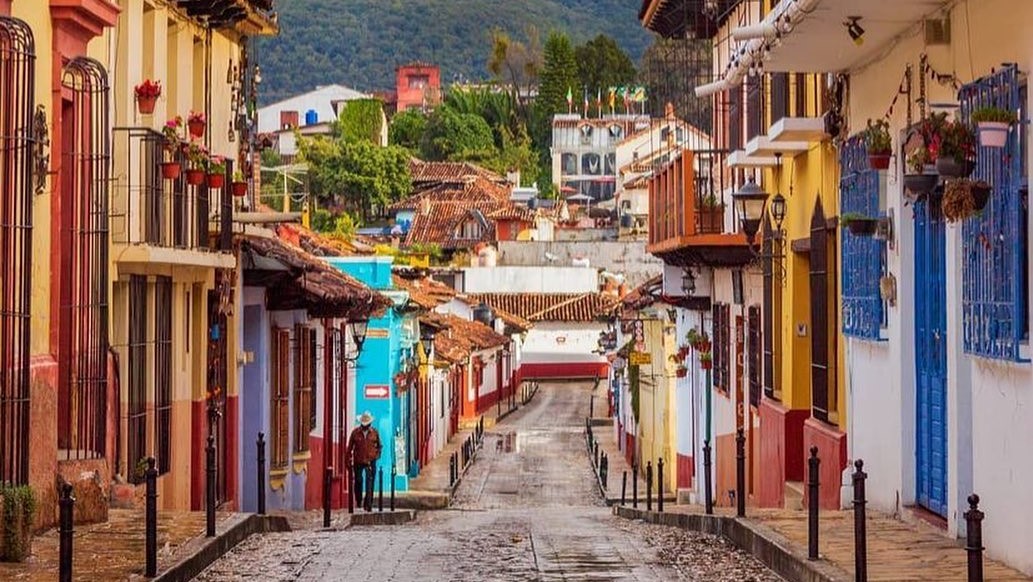
This bustling town is hidden in the middle of mountains; walk through its streets as those who live here do every day, you will notice that at the end of any of them, there is almost always a mountain and fog.
You can enter the heart of their Tzotzil and Tzeltal communities; sit in their kitchen and try a handmade tortilla, fresh from the comal; help a weaver to make her intricate textiles; At the end, have an aromatic coffee and be a barista for a day at Carajillo Café.
Agua Azul
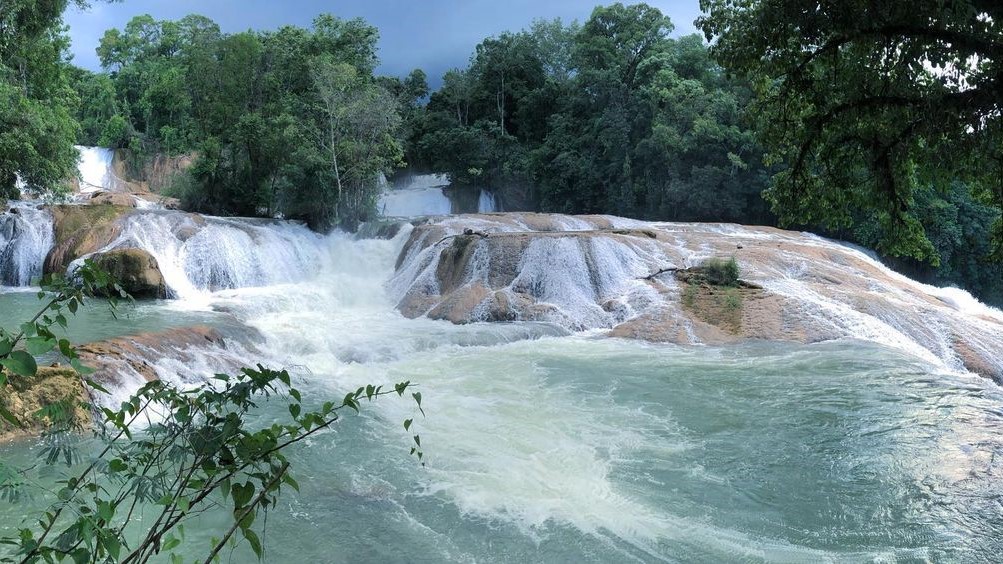
These waterfalls, declared a Biosphere Natural Reserve in 1980, are formed from the tributaries of the Otulún, Shumuljá, and Tulijá rivers, creating a truly impressive natural spectacle, especially for their blue and white waters that contrast with the exuberant jungle landscape surrounds.
Visiting the Agua Azul waterfalls is a unique experience, especially for travelers looking for unique natural paradises. However, there are many more attractions and places to see in its surroundings.
Walking through the waterfalls is a pleasant experience, but swimming in its waters is simply wonderful. As these waterfalls are staggered, natural pools are formed in which you can swim, but you have to be cautious and take the necessary precautions to be able to do it safely to avoid accidents.
Adventurers can not only swim in its crystal clear blue waters, they can also go adrenaline-fueled river descents, go rafting, or even scuba diving.
For those who love to get in touch with nature, we recommend hiking in the surroundings, this is a good way to tour the waterfalls and take impressive photos of both the river and its turquoise waters, as well as the flora and fauna that surrounds them. In fact, photography tours are very popular here.
In the surroundings, you can find all kinds of services to spend a very pleasant day. From places where you can enjoy the typical dishes of Chiapas, to stalls where you can buy handicrafts. There you can also hire the service of local guides who will take you to explore the best of the area and can guide you to the best waterfalls, while they tell you the myths and legends that this paradisiac place keeps.
Camping is a popular activity here, so if you want, you can camp in the permitted areas on the banks of the Tulijá River.
Yucatán

In Yucatan, the Mayan culture floods everything in its towns, archaeological sites, and cities. Its traditional villages exude charm, boast exquisite crafts and invite you to taste the unforgettable gastronomy. To get to know Yucatán in-depth, you have to travel it with passion and return again and again.
Yucatán comes from a story that tells that the Mayan inhabitants, carrying jade jewels, answered the Spaniards “yuuc catán” when they asked them what they were carrying. It has a climate warm humid and has a temperature of 26 ° C per year. It has the magical towns of Izamal, Valladolid, Maní and Sisal. The pre-Hispanic cities of Uxmal and Chichén Itzá are World Heritage Sites.
Merida
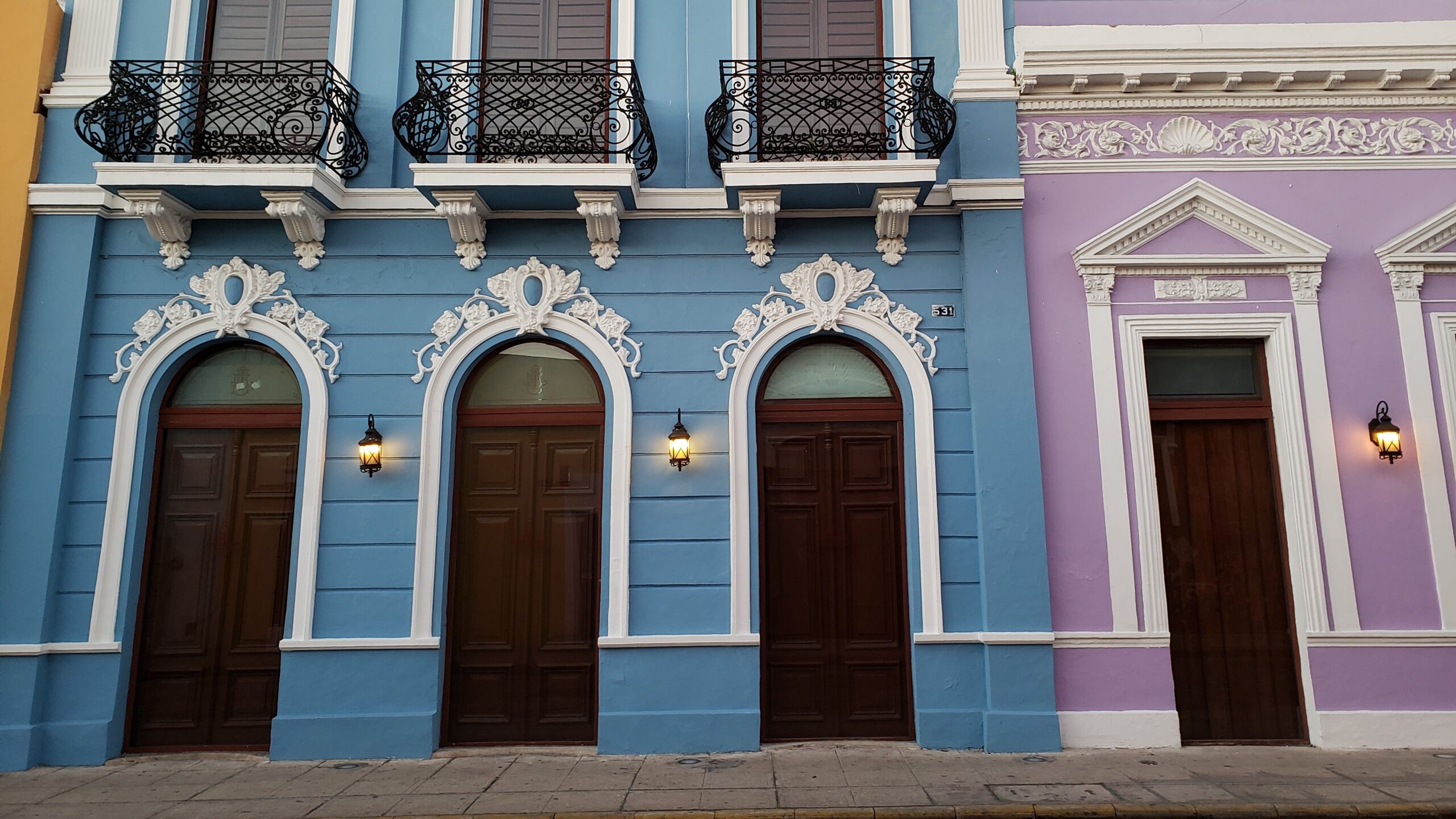
The beautiful “white city” is home to the great jewels of Yucatan: the elegant Paseo Montejo, the old Cathedral, Museums, and the best restaurants to eat Yucatecan dishes.
Mérida is the perfect point to discover other treasures, such as Mayan archaeological sites, ports, and estuaries with flamingos.
With a warm climate and lush vegetation, it is also home to troubadours, traditions, and friendly people.
During your stay in Mérida, Yucatán, don’t miss the Cuzamá cenotes, there you can get on an old wagon “pulled by mules” that will take you to know three spectacular cenotes.
Yucatán is a territory on whose surface, a product of the millenary erosion of the soft and porous limestone, the cenotes occur. On this surface, there are many geographical features known as cenotes (water bodies interconnected underground).
Fortunately for those who like to visit the Mexican southeast, they have adapted to favor the practice of various adventure sports such as diving, snorkeling, speleology (exploration of caves and caves), among others.
Mexico is undoubtedly one of the most beloved countries around the world, the warmth of its people is unmatched, national and foreign tourists enjoy . . .

